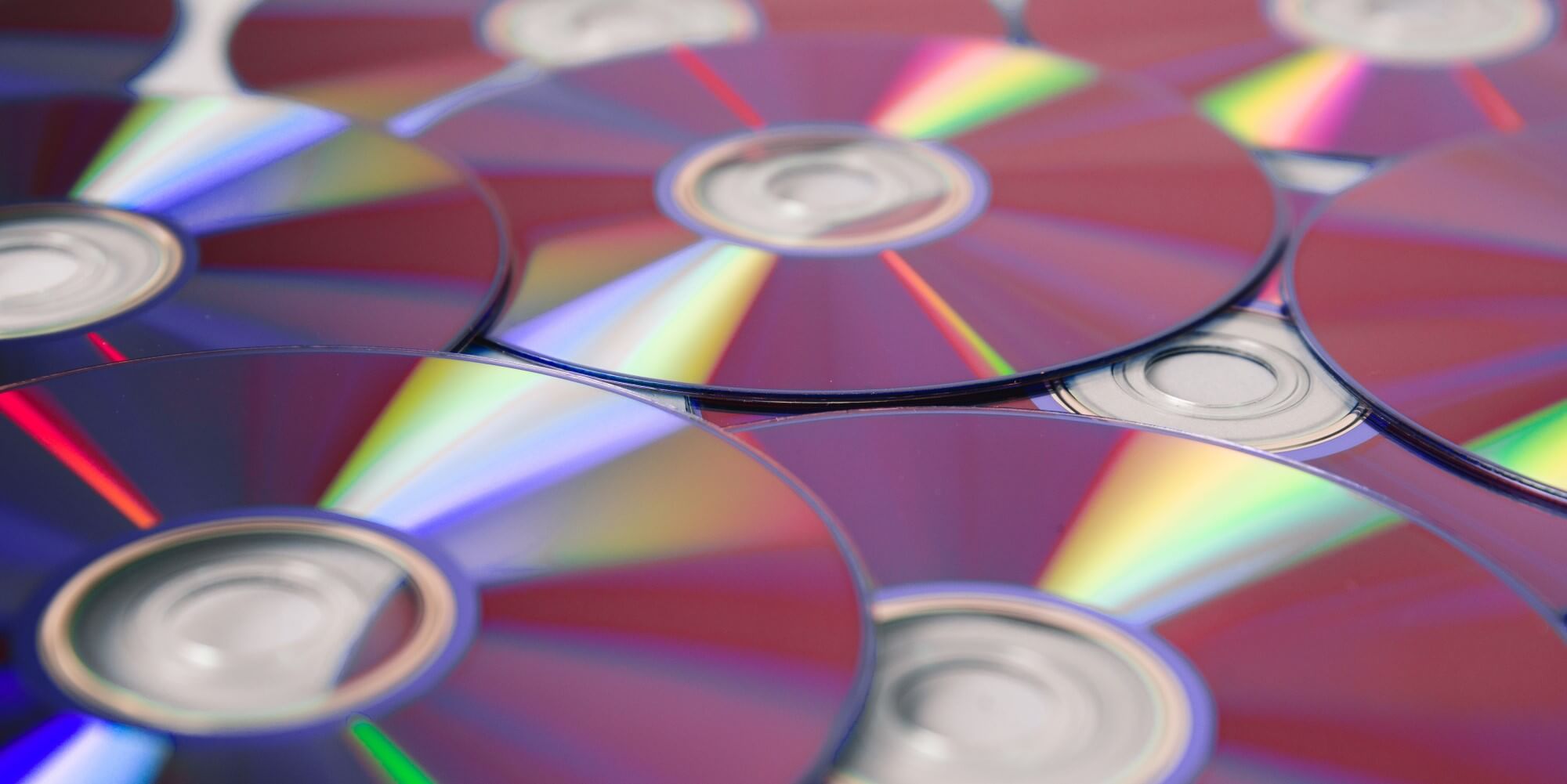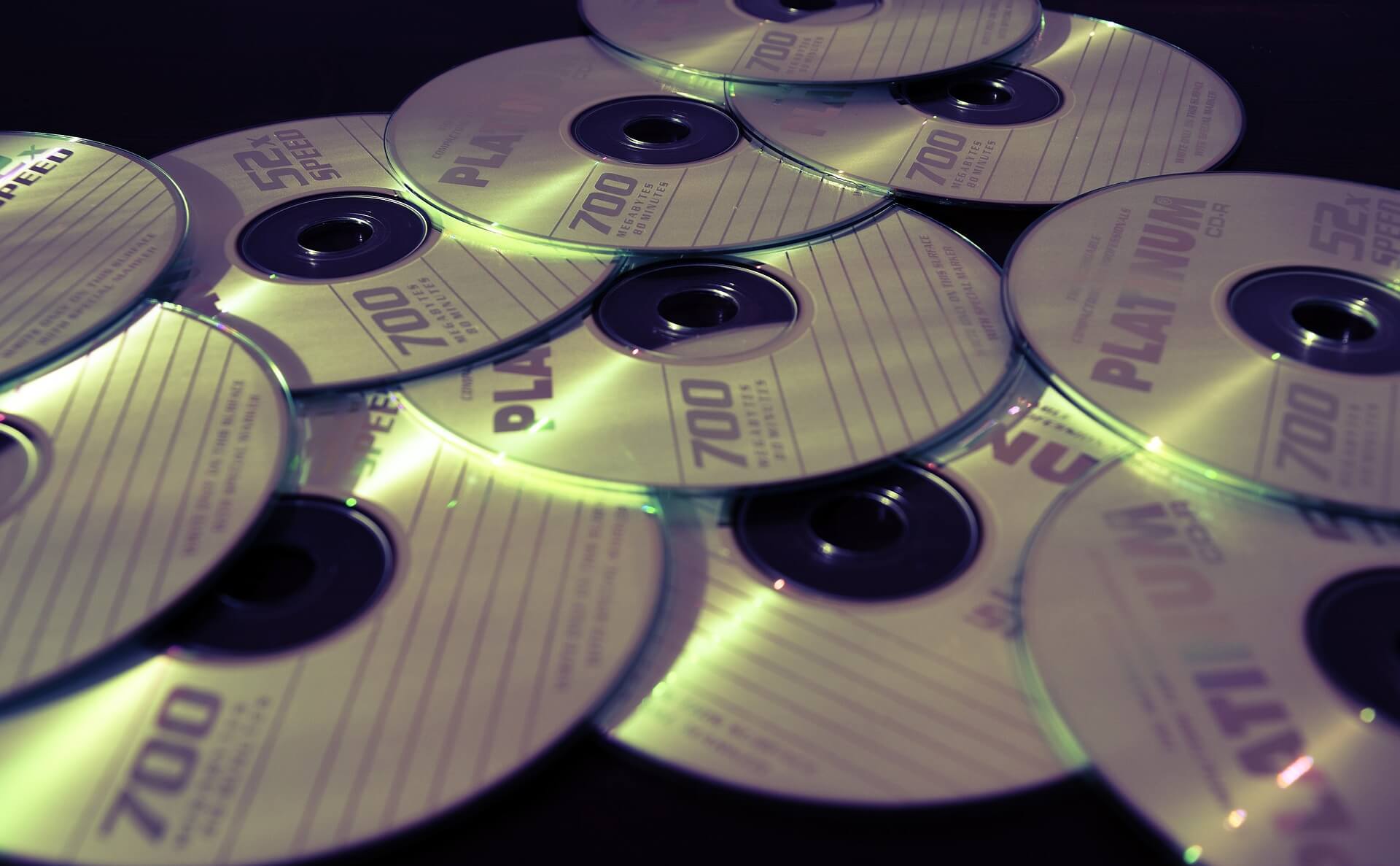Recordable Media: The Limited Lifespan of CD-R and DVD-R12 min read

For a period of about fifteen years, before the widespread availability of high-speed internet and high-capacity solid state media like thumb drives, the best way to share and store large amounts of data, video, and high-quality music was burning recordable disc media. The two most popular types — CD-R and DVD-R — had the benefit of widespread adoption, relatively low cost, and general hardiness.
The mid-2010s saw a precipitous decline in the use of disc-based media. Cloud-based distribution had become a viable option for most, and inexpensive magnetic hard drives and solid state media became cheaper and offered vastly more storage. Despite this transition, many companies and individuals rely on aging recordable disc media to store and protect their valuable legacy information. This is a bad idea, as most recordable disc media has a relatively short shelf life. Let’s explore why long-term storage on recordable disc media is a gamble, and what you can do to protect your data.
The Flaws of Recordable Disc Media
One of the selling points of various forms of disc media is its hardiness. Created with “unbreakable” polycarbonate, the discs are resistant to scratches, drops, moisture, and other environmental hazards. Stamped, replicated discs offer even more protection, and can be relied upon for long-term storage, but recordable discs have several weaknesses that preclude them from being reliable for archival purposes.
Most CD-R and DVD-R media rely on a layer of dye to hold the vast amounts of data within. When data is recorded, or “burned,” to the media, a laser etches a series of pits and grooves into the dye, which are then read as data by playback devices. Over time, this dye begins to degrade, making the recorded data more difficult to recover. Eventually, some or all of the data on the disc becomes unreadable. There are too many variations on dye formulations to give a reliable estimate of how long you can expect your burned discs to last, but in general, CD-R media is considered the least reliable. Most CD-R media has a projected shelf life of 5-10 years when unrecorded, and burned media can become unreliable after as little as 2 years, depending on the manufacturer and quality of the media.
DVD-R media uses different dyes and enjoys a somewhat longer projected lifespan of 30 years or more. Again, this depends on the manufacturer and media quality. We have seen instances of DVD-R media becoming difficult to read after as little as 10 years in a climate-controlled storage environment. The expected lifespan can be greatly reduced by exposure to sunlight, wide variations in temperature and humidity, and other environmental factors.
Recordable media also relies on a reflective layer to read the information on the disc. Damage to this layer can cause part or all of the disc to become unreadable. On some media, this reflective layer is directly exposed on the top of the disc, and can be scratched or otherwise damaged by direct contact. In addition, most discs use aluminum as a reflective layer. Aluminum is prone to oxidation, which can cause it to blister, peel, or become discolored to the point where it is no longer reflective, rendering the disc unrecoverable. Again, the method of storage and environmental factors can play a part in how quickly the reflective layer degrades.
Another, less common form of disc failure is delamination. Over time, the adhesive used to bind the several layers of materials in a disc can degrade, causing the layers to separate and rendering the media useless. This occurs more frequently in bargain media.

What About Archival Grade Media?
Some recordable disc media was sold as archival grade media. These discs were often many times more expensive than their bulk counterparts, and for good reason. The dye in these discs was usually made from a mixture of metals, and was more resistant to fading and the chemical changes that lead to degradation. Their reflective layers also contain gold, which is highly resistant to oxidation. These discs were specifically created to have a lifespan of 100+ years, and have an excellent track record so far. While these discs can be expected to last many more years, we still recommend backing them up. Magnetic hard drive storage is cheap and reliable, and offers faster access to data, without the need for a disc drive.

Why Use DVS to Backup My Recordable Disc Media?
DVS has been in the data game for a long time. We were West Michigan’s optical media pioneers and have since developed an impeccable reputation as the area’sgo-to media preservation boutique.
How we preserve your assets depends not only on the type of data contained on the disc, but your needs. Do you have a lot of DVD-Video discs? Perhaps we can create files that are easily shared or uploaded to YouTube or social media. Maybe you have CD-Audio discs with company jingles or oral history interviews? In that case, we would suggest ripping the files to high quality .WAV or .AIFF files for future editing, and also compressed .mp3 or .m4a files for casual listening or sharing via email. General data, PowerPoint presentations, and jpeg photos — we have solutions for cataloging those as well! Best of all, we can take shelves worth of media, digitize it, and return it to you on a single hard drive, along with a simple spreadsheet documenting each asset. We can even safely and confidentially dispose of your old discs once the job is done, should that be required. Don’t let your important data fade away, contact DVS today!